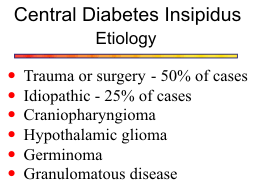30 year with history of recurrent renal stone. Analysis of
stone came out to be calcium oxalate.
There is no family history of renal stone. IVP shows linear
striatiation of papilla and occasionally
Medullary cystic collection of contrast and calcium. His
serum chemistry:
Na 139
K 4.0
Cl 109
Hco 19
s.creatine 1.1
Urine Ph 5.8
Arterial Ph 7.37
Arterial Pco 34
Q. what is the
kidny disease?
What is the
acid base abnormality?
What is the
treatment?
Answere:
Patient
has medullary sponge kidney.
It is
complicated by hypercaciruea and metabolic acidosis which is normal
Anion gap
and positive anion gap type.
In one fouth
of medulary sponge kidny patients renal stone are formed.
Oral alkali
thrapy with bicarbonate or citrate salt can be given.
Thiazide
diruretic can be tried.
Patient is
encourage to increase oral fluid so that about 2 to 2.5 liter urine out
put
Can be
maintained.
Sodium
restriction up to not more than 2 gm in 24 hour.
Proteins should
be not more than 1 gm/kg /day.
